Imagine stepping into your backyard and plucking a ripe, juicy tomato straight from the vine—its tangy aroma and vibrant color are the only invitations you need to taste summer in its purest form. Whether you’re taking your first steps into gardening or you’re a seasoned green thumb, growing organic tomatoes at home offers a uniquely rewarding experience that combines the joys of nature with the gratification of self-sustainability.
In this guide, “Tips For Growing Organic Tomatoes At Home,” we delve into trusted techniques and insider secrets that transform simple gardening into a culinary adventure. By embracing organic methods, you not only cultivate healthier, more robust plants but also contribute to a more sustainable environment—one delicious tomato at a time.
From selecting the right seeds to nurturing them through harvest, each tip is designed to empower you with confidence and practical knowledge, ensuring your success in the garden. With these insights, you’ll reap the benefits of bountiful harvests and the pride that comes from growing your own food, celebrating every bite as a testament to your efforts.
Choose Disease-Resistant Tomato Varieties
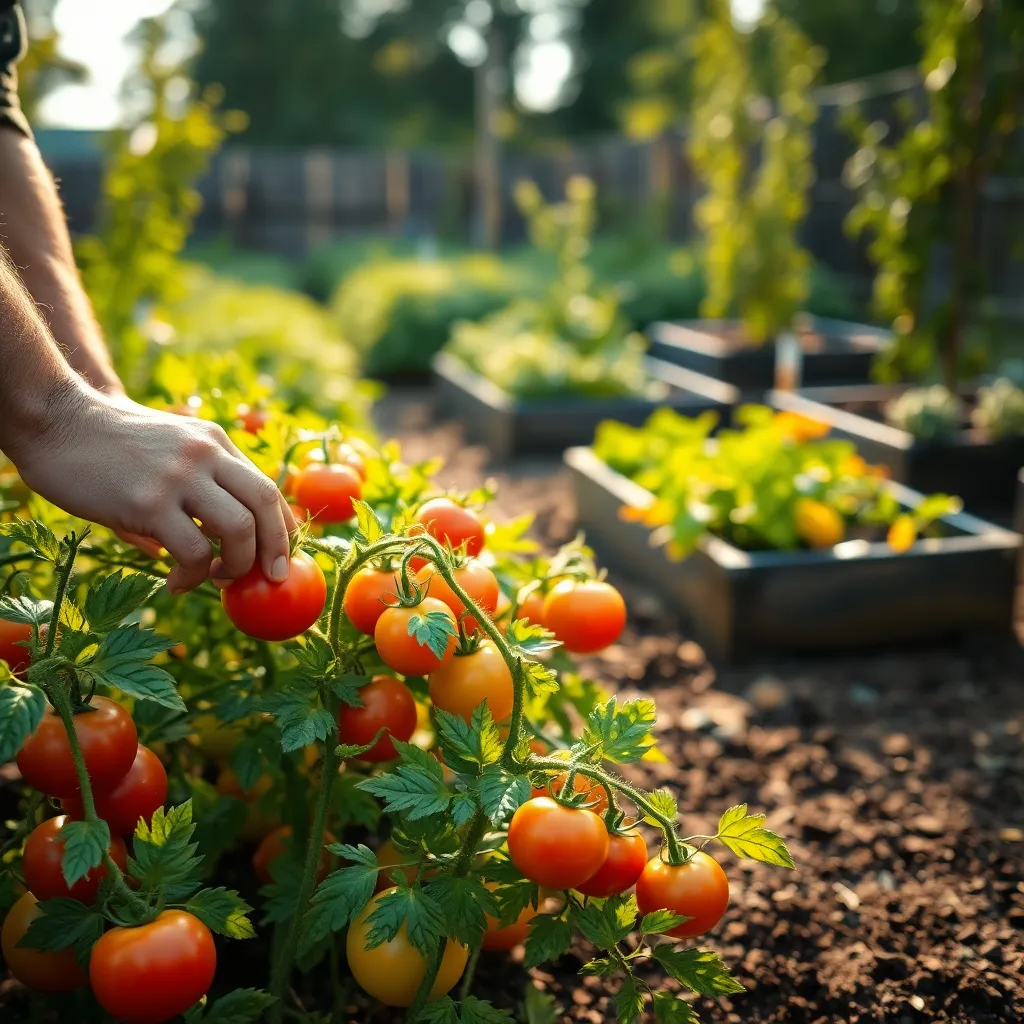
Choosing disease-resistant tomato varieties is crucial for a thriving organic garden. These varieties are bred to withstand common tomato diseases, reducing the need for chemical interventions.
To start, consider varieties like ‘Celebrity’, ‘Juliet’, and ‘Mountain Magic’, known for their resistance to a range of diseases. Each of these varieties has been developed to fight off issues such as Fusarium wilt, Verticillium wilt, and late blight, which can devastate a crop.
When planting, ensure your tomatoes are in well-draining soil with a pH between 6.0 and 6.8. Adding organic matter such as compost or well-rotted manure boosts soil fertility, supporting healthy growth and disease resilience.
Water your tomatoes deeply but infrequently, about 1-2 inches per week, to encourage strong root systems. Mulching with straw or shredded leaves helps retain soil moisture and prevents soil-borne pathogens from splashing onto leaves during rain or watering.
For experienced gardeners, rotating crops annually can further prevent disease build-up in the soil. It’s also beneficial to practice companion planting, using basil or marigolds to repel pests and enhance growth.
Prepare Nutrient-Rich Organic Soil
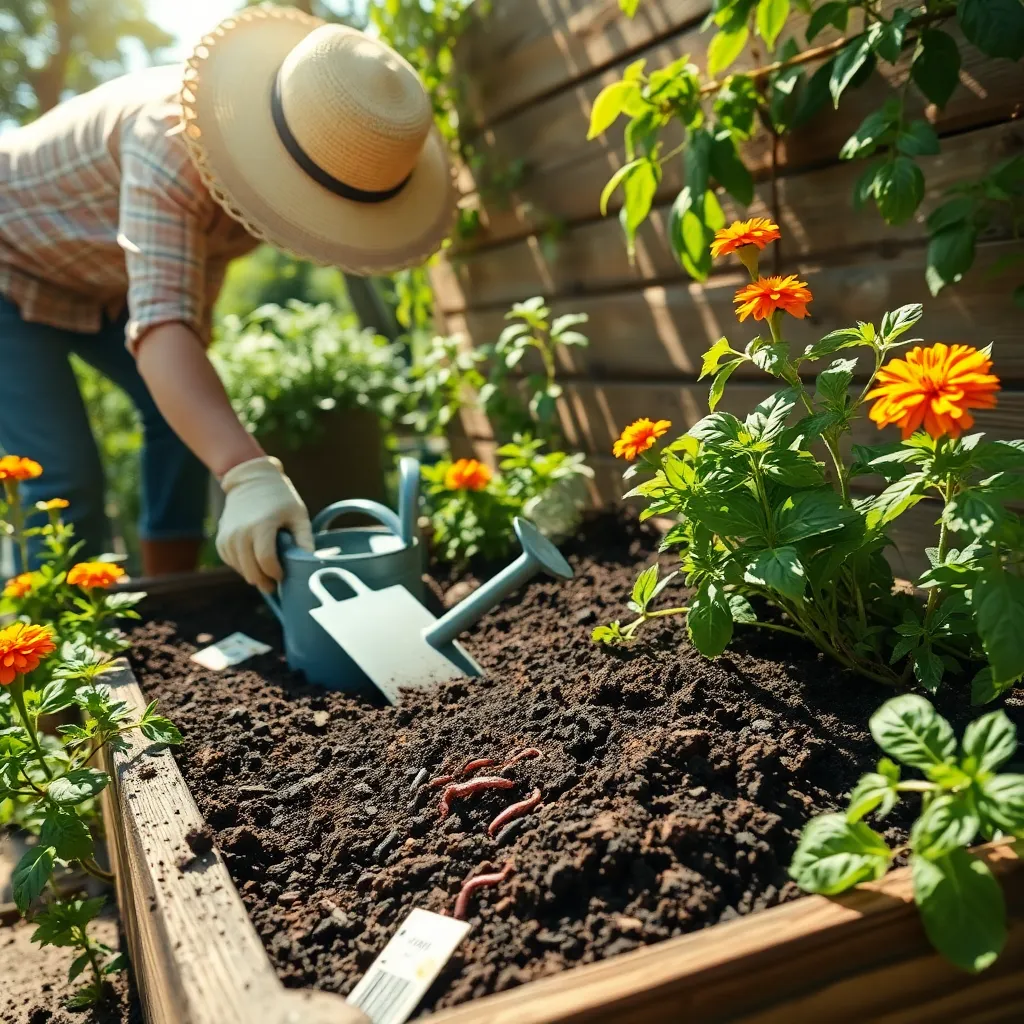
To create nutrient-rich organic soil, start by incorporating plenty of well-aged compost into your garden bed. Compost adds essential nutrients and improves soil structure, helping your tomato plants thrive.
Next, consider adding organic matter such as shredded leaves or grass clippings to enhance soil fertility. These materials break down over time, enriching the soil and providing a continuous nutrient supply.
For optimal results, test your soil’s pH and adjust it to the ideal range of 6.0 to 6.8 using natural amendments like lime or sulfur. This ensures that your tomato plants can effectively absorb nutrients from the soil.
To maintain soil health, practice crop rotation by avoiding planting tomatoes in the same spot year after year. This technique reduces the risk of soil-borne diseases and nutrient depletion.
Implement Regular Deep Watering
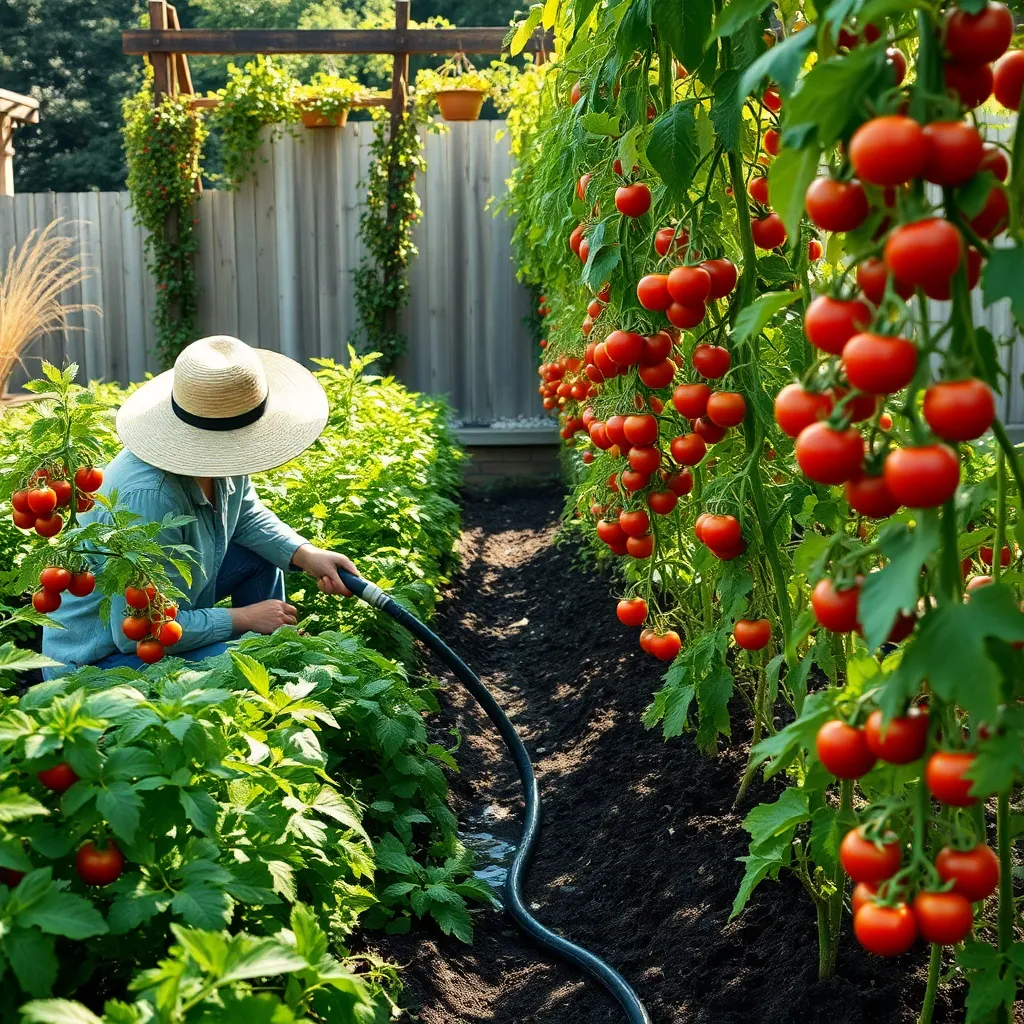
To ensure your organic tomatoes thrive, it’s crucial to implement regular deep watering techniques. This method encourages strong root systems by allowing water to penetrate deeply into the soil, rather than just wetting the surface.
Instead of frequent shallow watering, aim to water your tomato plants deeply once or twice a week. This practice helps the plant develop resilience against drought conditions, as roots are encouraged to grow deeper into the soil.
For optimal results, water early in the morning or late in the afternoon when evaporation rates are lower. This timing ensures that more water reaches the roots, allowing for better absorption and reducing water waste.
Beginners should aim for a watering depth of about 6 to 8 inches to adequately meet the plant’s needs. Advanced gardeners can use a soil moisture meter to ensure precise watering levels, tailoring their approach to specific soil conditions.
Utilize Organic Mulch for Moisture
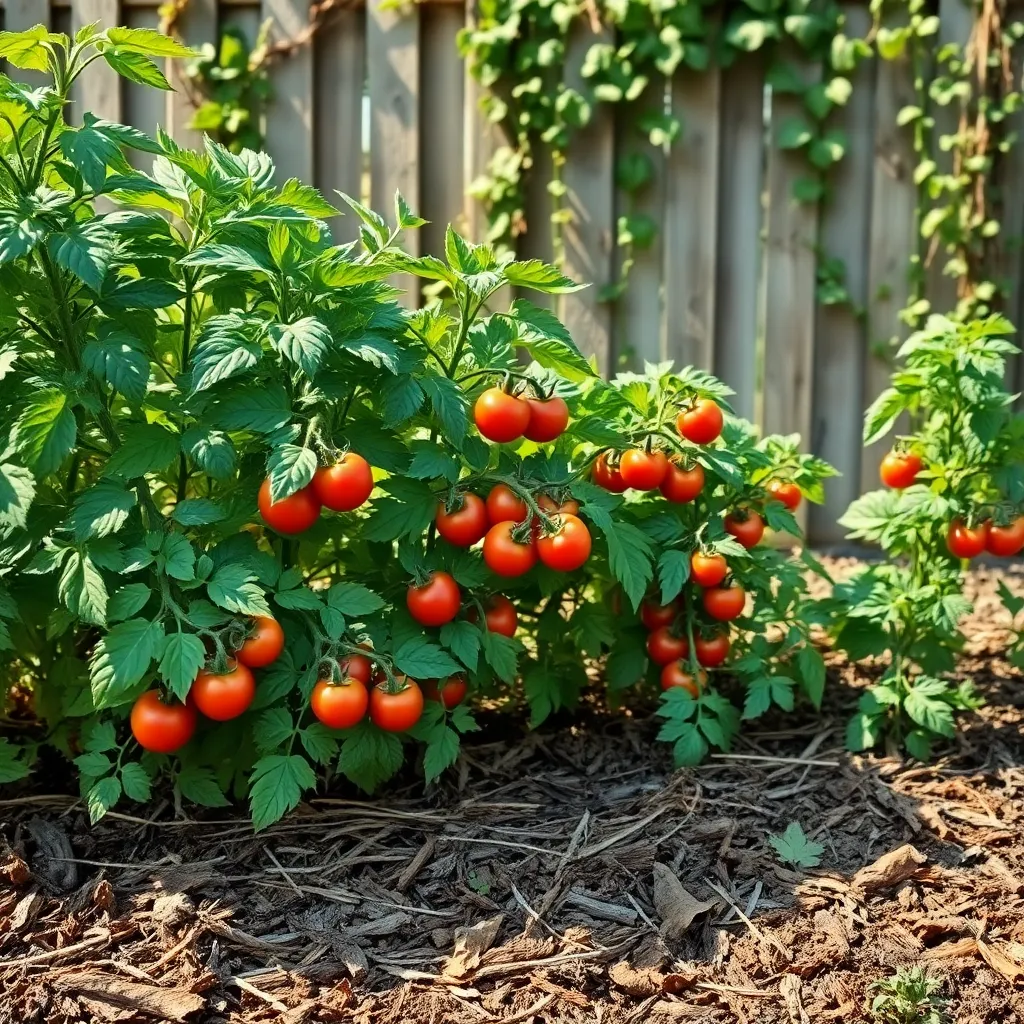
To effectively maintain moisture in your tomato garden, consider using organic mulch. It helps in retaining soil moisture, which is crucial during the hot summer months when evaporation rates are high.
One of the best types of organic mulch for tomatoes is straw. Spread a layer about 2-3 inches thick around the base of each plant, ensuring it doesn’t touch the stems to prevent rot.
Another excellent option is shredded leaves, which are often readily available in your own backyard. As these leaves decompose, they also enrich the soil with nutrients, providing an additional benefit.
For those looking for an advanced tip, consider using a mixture of mulch types to maximize benefits. Combining grass clippings, straw, and shredded leaves can create a robust mulch layer that locks in moisture while slowly releasing nutrients.
Practice Crop Rotation Annually
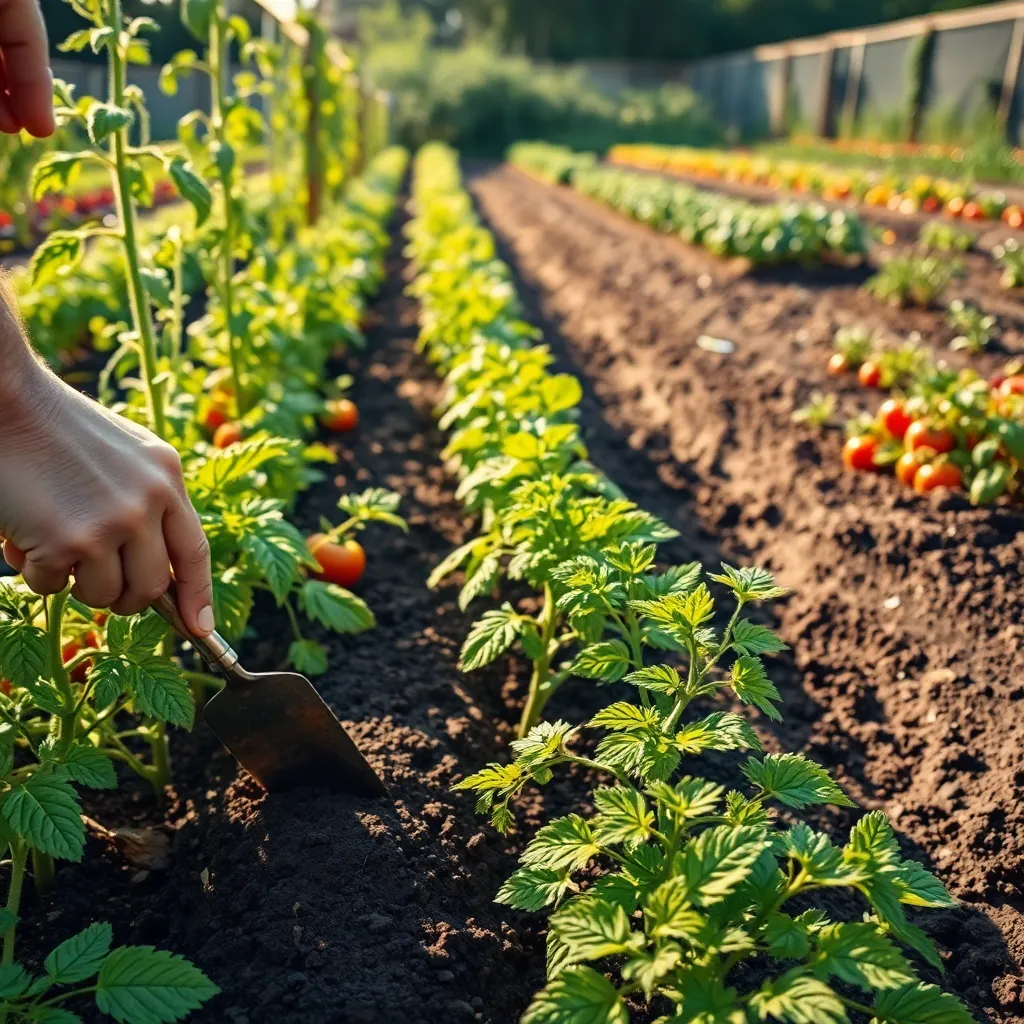
Crop rotation is a vital practice for maintaining soil health and preventing pest and disease buildup in your tomato garden. By changing the location of your tomato plants each year, you help disrupt the life cycles of soil-borne pathogens and pests.
Consider planting tomatoes in a different part of your garden than last year. This simple change can significantly enhance the sustainability of your garden by minimizing the risk of soil depletion and improving nutrient availability.
Begin by dividing your garden into sections and rotating crops systematically over a three- to four-year cycle. This can include rotating tomatoes with legumes, leafy greens, and root vegetables, as these plants have different nutrient requirements and pest profiles.
Maintaining a crop rotation schedule is easier with a garden planner or journal to track what was planted where and when. By doing so, you can ensure your soil remains fertile and your plants stay healthy, making your organic tomato-growing efforts more successful and rewarding.
Conclusion: Growing Success with These Plants
In nurturing your relationship with homegrown organic tomatoes, we’ve explored five essential concepts: understanding the importance of healthy soil as a foundation, ensuring consistent communication through regular watering, supporting growth with natural fertilizers, managing pests with gentle care, and finally, reaping the rewards of a bountiful harvest together. These principles mirror the nurturing required in our personal relationships, emphasizing care, patience, and mutual growth.
Now that you’re equipped with these insights, take the immediate step of selecting a sunny spot in your garden or home to begin your tomato-growing journey. This simple action will lay the groundwork for an enriching experience that mirrors the effort and love you invest in your relationships.
Remember to bookmark this article, as it serves as both a practical guide for your organic gardening endeavors and a metaphorical reminder of the nurturing necessary for thriving relationships. As you embark on this journey, envision the flourishing success of your tomatoes as a symbol of the potential growth and deepening of your personal connections. Embrace this opportunity to cultivate both your garden and your relationships, fostering a future rich with love and abundance.

